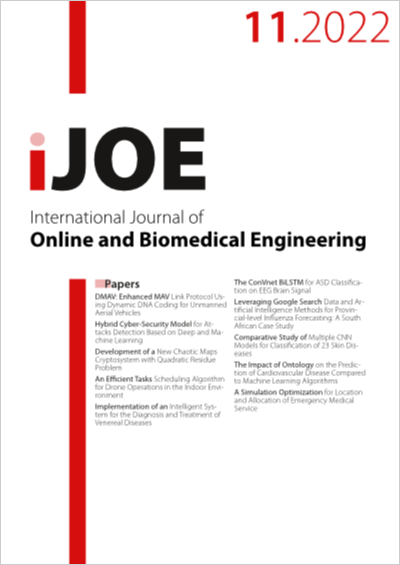Leveraging Google Search Data and Artificial Intelligence Methods for Provincial-level Influenza Forecasting: A South African Case Study
DOI:
https://doi.org/10.3991/ijoe.v18i11.29899Keywords:
Influenza forecasting, Artificial intelligence, Deep learning, Machine learning, Digital Epidemiology, Infodemiology, Google TrendsAbstract
This paper investigates the usefulness of Google search patterns with Artificial Intelligence (AI) techniques for timely influenza-like illness (ILI) forecasting for each of the nine South African provinces. Traditional surveillance methods are limited by delays in reporting. Existing digital disease surveillance studies that employ alternative online data have scarcely explored sub-Saharan African countries. In South Africa, Google search data has only been recently studied for ILI surveillance at the national level. Meanwhile, the differences in socio-economic and technological conditions across provinces call for a finer spatial investigation. We perform correlation analysis between Google trends (GT) data for 21 ILI-related terms and real-life ILI surveillance data for each province. Next, we develop models to assess the predictive performance of these GT data for forecasting ILI rates, using time series, machine learning, and deep learning methods. We observe sufficient correlation for only two of the nine provinces: Gauteng and Western Cape. Thus, GT data could only be used to forecast ILI in these two provinces. Interestingly, these two provinces are regarded as the most economically developed. In the other seven provinces, LSTM, a deep learning technique, gives more accurate predictions than a baseline autoregressive model when only past ILI data are used for forecasting future ILI trends. The results reveal that, for provinces for which GT data is sufficiently available, it is not only free and fast, but is an effective predictor on its own as well as when added to past ILI data for forecasting future ILI infection rates. The correlation analysis suggests an association between provincial socio-economic development and the use of digital platforms for disease surveillance. Overall, the study established the need for finer scale ILI forecasting which will inform targeted planning for disease surveillance and interventions.
Downloads
Published
How to Cite
Issue
Section
License
Copyright (c) 2022 Seun Olukanmi, Fulufhelo Nelwamondo, Nnamdi Nwulu

This work is licensed under a Creative Commons Attribution 4.0 International License.



